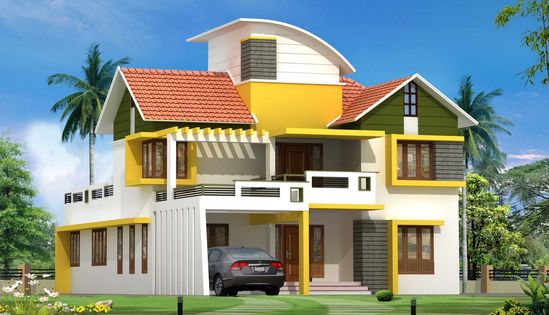
There has been a major transformation in modern house design in India over the last few decades. With an increase in the number of rapidly urbanising people, changing way of life and increasing focus on aesthetics, modern houses in India are becoming an expression of innovation and sustainability. In the modern house design realm of India, this article looks at the key elements, trends, and factors that play a role in shaping this landscape.
-
Embracing contemporary aesthetics
The Modern house design in India incorporates an amalgamation of sleek, minimalist aesthetics along with functional spaces. In recent years, the architecture has been traditional styles and then clean lines, open spaces, and bold colour palettes. Simplicity and elegance are the keywords for architects and homeowners. Nowadays, glass, steel and concrete are common elements used for a contemporary look as well as to facilitate natural light ventilation. By departing from ornate design, one can achieve a more sophisticated, less cluttered look appropriate for today’s fast-paced urban lifestyle.
-
Open-plan layouts for flexible living
One of the defining features of modern houses in India is the rise of open-plan layouts. This concept of open spaces that fuse the living, dining, and kitchen spaces is becoming super trendy. The result is a sense of connectivity in the home, great for socialising, family gatherings, and even home offices. Removing the walls where it’s not needed makes the interiors seem larger and more flexible to different requirements. The integration with the outdoors is also emphasised in modern house design, the large windows and sliding doors that seamlessly fold and blend the indoors into garden spaces or balconies.
-
Focus on sustainability and green design
With rising environmental consciousness, sustainability has become the theme of modern house design. More and more modern houses in India are now equally taking up eco-friendly features ranging from energy-efficient appliances to the perfect use of solar panels and rainwater harvesting systems. Materials used to build are sustainable, like bamboo, reclaimed wood and recycled metals. Increasingly, many new homes are designed to reduce their energy consumption, limiting their waste and ensuring they have a minimum environmental footprint. Not only does this reduce long-term utility costs, but it also matches global sustainability goals.
-
Smart home technology integration
Integration of smart technology into modern house design is another important trend in modern house design in India. More and more people are living in smart homes that require all sorts of devices such as lighting, security systems, and temperature controls to be managed via smartphones or voice assistants. These days’ modern houses are loaded with the latest security features like biometric locks and also surveillance system making them very safe and technologically easy locked. They include smart lighting automated systems which help to manage energy use and voice-activated assistants that ease daily tasks. This integration of technology makes homes more connected than ever before and adds an extra layer of convenience and luxury.
-
Use of natural materials and textures
Another significant trend is incorporating natural materials in modern house design in India. Using natural wood, stone, marble and clay to add a warm, organic feel, it blends in nicely with the sleek and contemporary design. These materials are both aesthetically pleasing and sustainable, achieving equilibrium between modernity and tradition. The combination of modern building materials like glass and steel with natural texture helps to give the interiors a tactile dimension which feels both contemporary and grounded in nature.
-
Maximizing space in urban homes
With space constraints in urban areas, modern house design has been fuelled by innovation, mainly in the metropolitan cities of India. With the rising costs of land and the increasing prevalence of high-rise apartments, designers are attempting to find ways to offer maximum space efficiency without sacrificing comfort. To accommodate smaller living spaces, multi-functional furniture such as modular designs and built-in storage solutions are often incorporated. Modern houses in India now feature sliding partitions, loft-style designs and mezzanine floors, all of which allow residents to use every inch of space creatively. Leveraging this trend, these clever design solutions take account of the ‘modern family’, which means they live in smaller but more functional homes.
Conclusion
The modern Indian house design has evolved into more efficient, sustainable and aesthetically pleasurable living spaces. With the growing demand for homes that are stylish and practical, modern houses in India also continue to incorporate open-plan layouts, eco-friendly features and smart technology as they take shape. The advent of such trends as the focus on natural materials and the utilisation of space in urban areas is destined to see modern house design further evolve and homes in India move beyond being a place to live to be a representation of what people in India believe and hope for.






